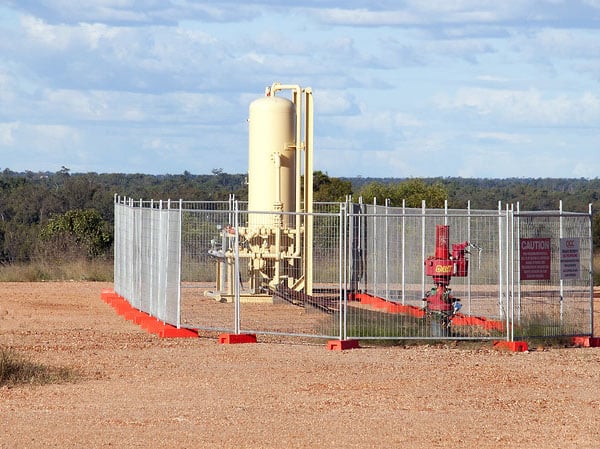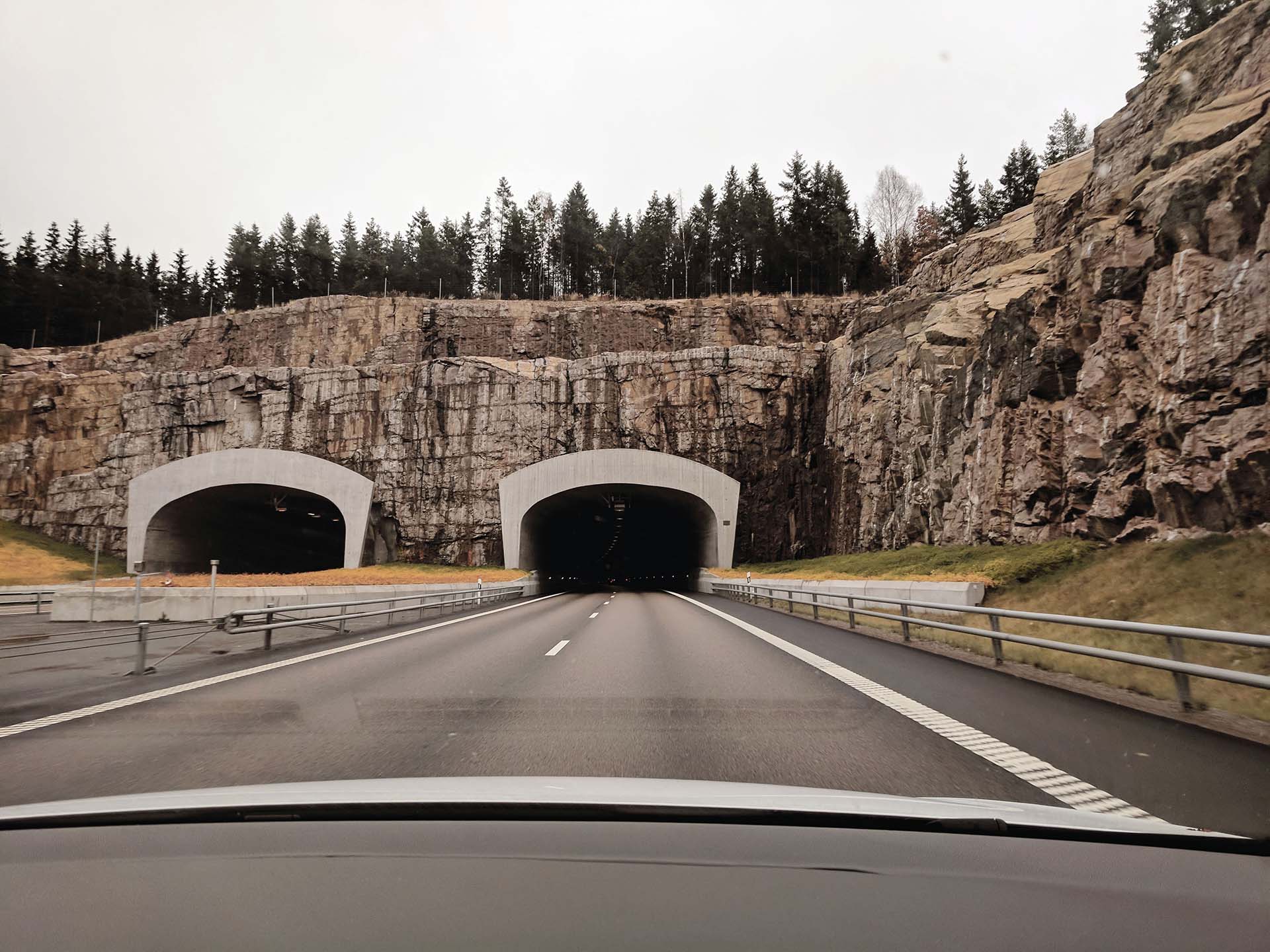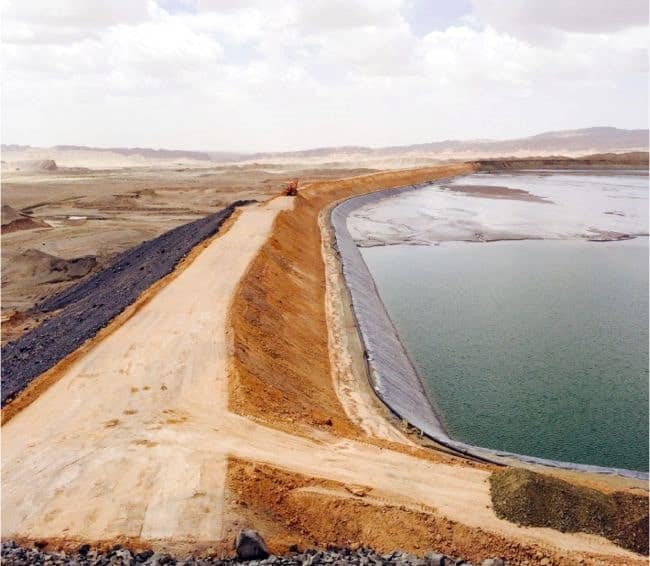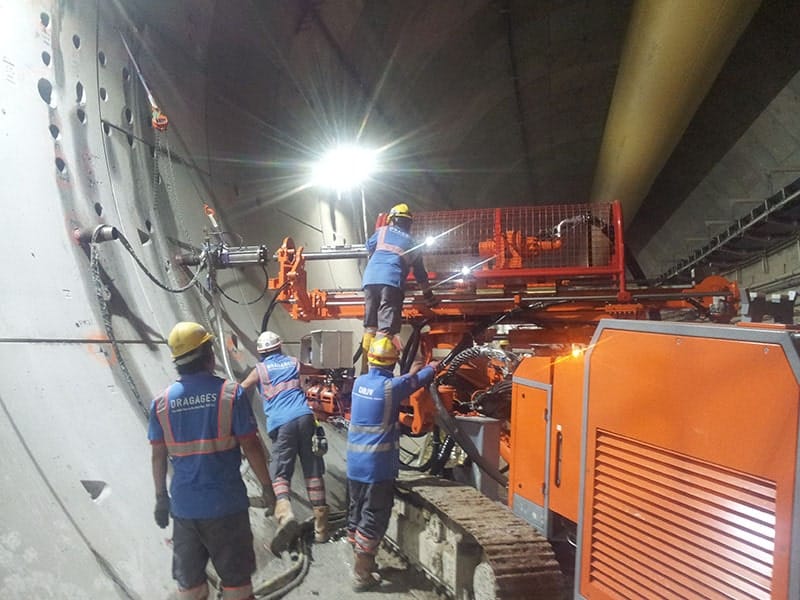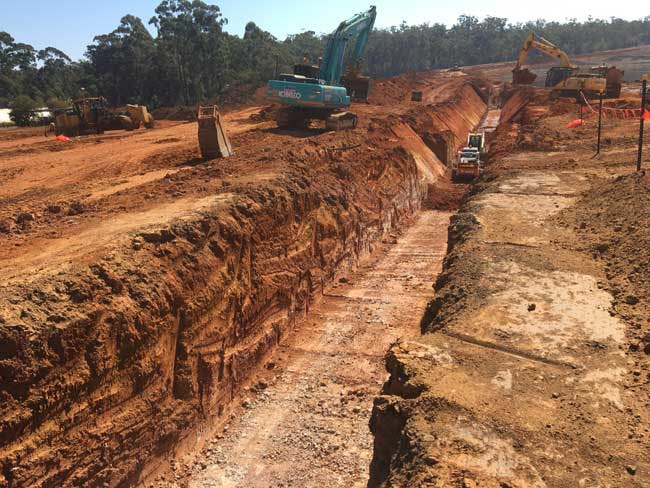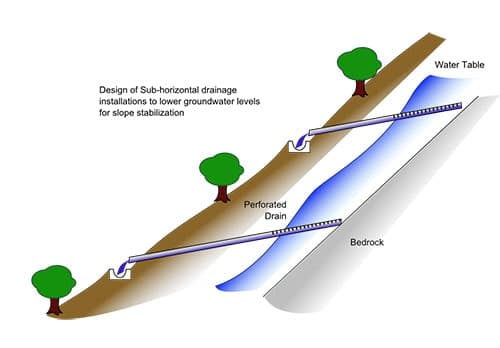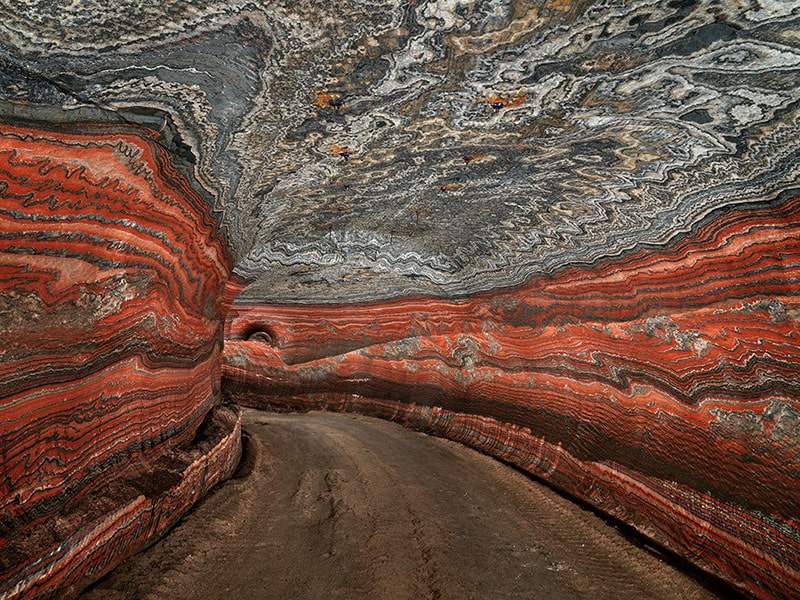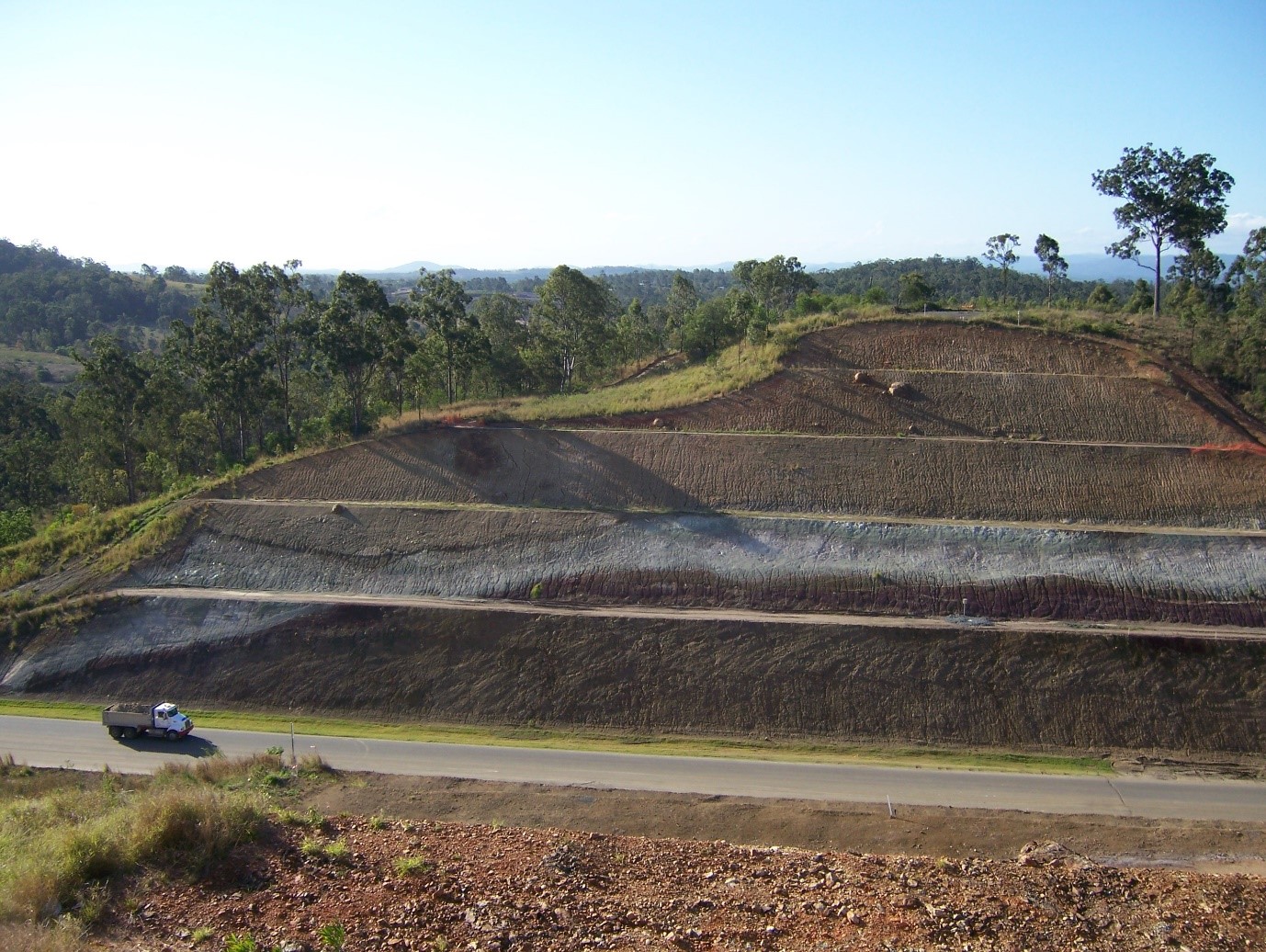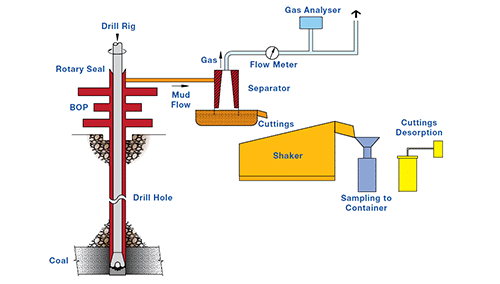Outbursts and Coal Bursts
Sigra’s initial involvement in the coal industry was with outbursts – a theme that has stayed with the company ever since. In 2021 Sigra issued an ACARP report on new methods to consider outbursting and coal bursting. This recommends major changes to the way in which the industry assesses and manages the risk associated with these events. The approach is not based on some threshold of gas content or stress below which an event will not occur. Rather it is based on the determination of the consequences of an outburst or coal burst occurring. This predicts the distance with which material may be expelled in an event and advocates keeping personnel out of this range.
Outbursts are split into two categories. The first are events where failure of the coal mass occurs with associated dilation. The coal then desorbs gas into the dilated fractures so that they pressurise and when the outburst occurs it is driven by the free gas within these. The velocity of the projected coal may be determined by computing the pressure that may be generated in the fractures and their volume. It is reasonably possible to work out how far the operators must be away from the face to avoid the ejected material after its has bounced and slid to a halt. The gas volumes released in such outbursts is not great. If the estimated velocity is too high then gas drainage must be employed.
The second type of outburst involves gouge material associated with faults. These are far more dangerous events as this material fails in a different manner. This is by a process of gas erosion followed by blocking of the erosional passage so that a void may then pressurise. The plug blocking the erosional passage is then expelled along with the gas stored behind it. This process may then repeat itself with erosion-block-expulsion cycles that may end up discharging thousands of tonnes of material and maybe a million cubic metres of gas. The geological circumstances under which these events may occur must be detected by exploration, and either the area be avoided or drained of gas with meticulous care.
Coal bursts involve the expulsion of coal by the action of strain energy. These will not occur in highly cleated or sheared material because it does not have sufficient strength to be stressed. Local rib or face failures may occur but these can be avoided by keeping personnel out of harm’s way. When an entire roadway’s ribsides or pillars are stressed to near failure then it takes an event such as a local failure or seismic event from the goaf to lead to a sudden and very violent failure. A way to prevent such events is to precondition the coal to remove its cohesion and hence strength, and therefore ability to carry stress. Another is to prevent the occurrence of seismic events by preconditioning what will become the goaf. A third is to accept the solution of the metalliferous industry and to use energy absorbing support systems.
Drainage
Because of the importance of gas drainage to relieving outbursting, Sigra also became involved in the design of gas drainage and drilling to support it. The design of gas drainage has required the measurement of permeability and gas content. In this respect Sigra has developed its drill stem test systems for use in coal exploration drilling. It has also developed pulsed DST testing to determine directional permeability. To determine how permeability changes Sigra has developed the concept of the stress path in coal and the analytical means to calculate it. This has had to be supported by developments in determining the mechanical properties of coal, including shrinkage and poroelasticity. The methods of measuring gas contents and isotherms have also been improved, notably with the use of Native isotherms where mixed gases exist. This family of techniques becomes an entire system of coal seam reservoir engineering with particular reference to coal mining.
Gas drainage also required the development of directional drilling systems. These started with the analysis of existing systems followed by the development of new ones. This involves both electronic, including geophysical and mechanical components. It also includes software that enables the determination of the mechanical behaviour of the drill string in a borehole. This is torque and drag analysis. Sigra first developed and used this in 1994.
The latest development is a rotary steering tool for directional drilling from underground.
Many of the gas drainage developments also have application in water drainage.
Ventilation
Not all gas drainage is for the purpose of relieving outbursting. Much of it is to make ventilation possible at safe levels of gas.
Because of the need to understand ventilation and to actually design mines, Sigra has a ventilation design capability.
Geomechanics
Sigra became involved in mine geomechanics through a variety of projects into bord and pillar mine design and then roof support design. This was initially accomplished by industry standards but diverged into measuring what actually happens underground. It fairly rapidly became apparent however that many of these standard processes were seriously deficient, not least of which is the empirical basis for pillar design which is in such widespread use.
Stress Measurement
Another aspect of mine geomechanics which was found to be needing serious upgrading was that of stress measurement and its interpretation. Sigra developed its IST2D overcore system to overcome some of these deficiencies. This system has now been used in most coal mines in Australia, and worldwide in metalliferous, civil and coal. It has even been used in petroleum and nuclear waste storage applications. A three dimensional version is now available. Other stress measurement systems were acquired and developed by Sigra, including hydrofracture to measure stress in coal.
Rock and Coal Properties
As part of its operations in coal it became apparent to Sigra that the standard tests used to assess the geotechnical properties of coal mine strata were not adequate. In the pre-failure areas they displayed anisotropy, elastic non-linearity, poroelastic behaviour and permanent plastic offset. All of this greatly affected Sigra’s work in stress measurement and had to be resolved. This started a major research project over several years, which led to the building of triaxial cells and the development of testing methods and analysis. The importance of this is not simply limited to stress measurement. It also affects the stress distributions within the strata around a mine.
Through the need to produce mine designs, followed by an ACARP project into longwall mining in massive strata, it became essential to develop other tests to determine the failure behaviour of rocks. Of particular importance here are the measurements of tensile strength along as well as across the bedding plane. Also important is the test modified from the GOST (Russian) standard for shearing core along the bedding plane.
Ductile Pillar Design
Sigra has undertaken work into creating reinforced pillars of much smaller dimension than the normal pillars that exist in longwall mines. The purpose of this design is to ensure failure with a ductile post failure behaviour and thus avoid problems with pillar bursting. This work has included physical modelling. The results to date indicate that these will be safer than conventional pillar design, will improve reserves and will in addition just crush out, thus avoiding stress concentrations for adjacent seam extraction and variations in the surface profile following mining.
Longwalls in Massive Strata
The complications associated with causing goaf formation in massive strata are considerable. They include coal bursts, pillar failures, sudden weightings, fracturing to surface and sudden inrushes of gas from the goaf. Sigra has undertaken work to recognise when this will be a problem and in devising suitable strategies to deal with it. These include hydrofracture, high energy gas fracturing and blasting.
Designs and Services
Sigra has designed bord and pillar mines, Wongawilli extraction panels and longwalls. This involvement has extended in some cases from exploration to complete design, excluding mine mechanical aspects. In other cases it has involved exploration followed by drainage design. In some situations it has just involved the design of some aspect of the mine.
Sometimes Sigra is simply called upon to provide specialist services such as the measurement of stress or the installation of instrumentation.
There are six particularly major projects in which Sigra has been involved. These are:
Sigra has also had involvement in coal mines in Russia, China, Indonesia and the USA.



